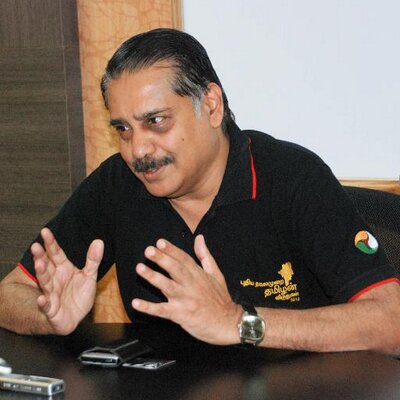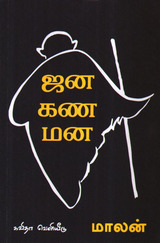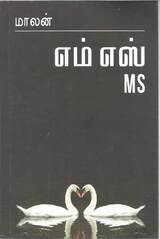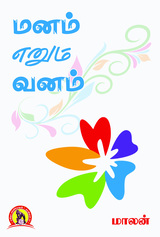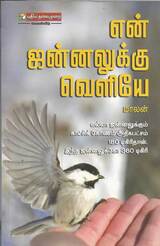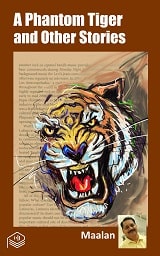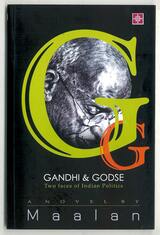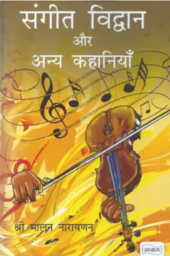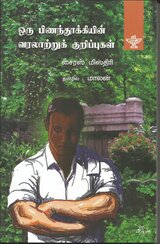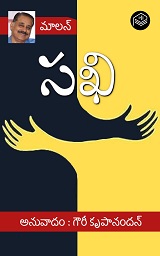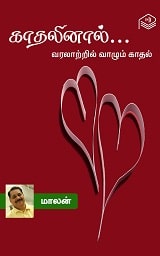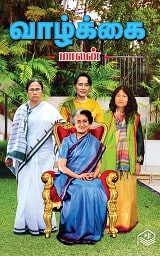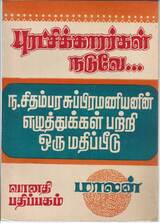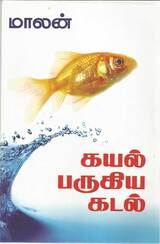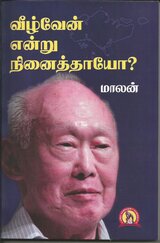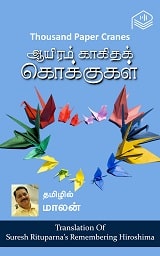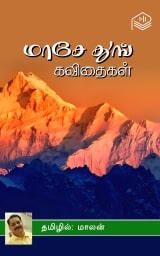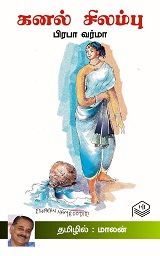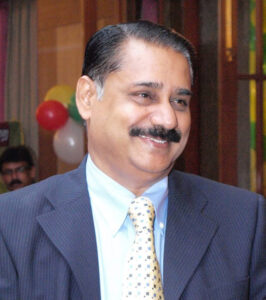National Seminar on Subramania Bharathi
24&25 September 2021 New Delhi
Innovation and Creation: Genius of Bharathi
Journalism of Subramania Bharathi
Maalan Narayanan
Today we fittingly celebrate Subramania Bharathi as Mahakavi, literary genius, passionate freedom fighter, social activist, mystic and a visionary. But from where his multi-faceted personality emanated? What had been the precursor of many his inventiveness? What bestowed him the courage to take on mighty colonial powers? From where he acquired the conviction to dismantle the caste oppression, communal bigotry, and challenge the age-old customs?
The answer to all these questions rests in one single word: Journalism.
Had he not taken up journalism as his career he might have ended as a Tamil teacher like Raghava Iyengar, or a researcher like U.V.Swaminatha Iyer or an orator like Somasundara Bharathi or grammarian like Arasan Shanmganar, all of them were his contemporary Tamil scholars. In those days it was very common among Tamil scholars to seek careers in teaching.
But Bharathi opted for journalism. Tamil journalism was in a nascent stage at that time. He has described the status of Tamil Newspapers in the early nineteenth century, after having spent long years in journalism, and just a few years before his demise.
“Let us not be wholly disheartened when we look at the newspapers of European and American continents and compare them with the sad plight of our own. The commercial newspapers are not our making. We learnt the trick of its trade from others only some thirty years ago. We have not yet matured in this art. There is no governmental aid for Tamil newspapers. A country’s reputation depends on how the government treats its newspapers. This will enhance the profit of newspapers, which in turn will pave the way for the entry of right type of scholars to its fold and the profession of journalism will attain its growth” 1
The pioneer Tamil newspaper, Swadesamitran, had its genesis in 1881, almost at the same period Bharathi was born. He entered the arena of journalism in 1904 when he was 22. Journalism is the only career he pursued in his entire life. In turn, it was journalism that enlightened him about the happenings around him, be it global, national or social. It opened the windows to the world and many doors within. It chiselled his personality, brought him close not just with leaders of his time, but with the common people as well and forbade him from becoming a pundit or puritan.
Bharathi joined Swadesamitran in 1904 as a sub-editor and as would be in any newspaper, he was entrusted with translating the news clips and copy editing, to begin with. He was able to publish his poems now and then and to write editorial occasionally. Young Bharathi was restless and felt restrained. Mr G.Subramaniam, his resourceful and eminent editor, was one of the founders of Indan National Congress and a staunch nationalist but belongs to the moderates’ faction. Bharathi as a Young Turk owed his allegiance to Tilak.
For a journalist, being politically and philosophically engaged is an essential part of his work, as this adds to the range of things one can talk about. But it is hard, particularly for a young journalist, to develop his vision and opinions in the company those who are not favourably disposed to him
After a stint of two years at Swadesamitran, he was hired by a group of radical young men, who founded weekly India, to lead the paper as its de-facto editor. Bhrathi bloomed fully in India. He penned articles that were spitting fire against colonial masters, and equally on his moderate compatriots. He authored editorials incisively analysing budgets, British parliamentary proceedings and the hypocritical and autocratic behaviours of bureaucrats.
He wrote elaborately and enthusiastically about the Bolshevik revolution that was in the offing at Russia and about the unparalleled sufferings of Indian labourers in South Africa. He wrote about the terrorism that erupted in the royal wedding in Spain and about the floods in Paris. It was very rare at the time for Tamil newspapers to discuss global events and he was a pioneer in reporting international events.
Reasons for the reluctance on the part of Tamil newspapers in publishing global news were two. First among them, is relevance. Some editors thought such news were irrelevant to Tamil readers as they were not familiar with the lands beyond their home. Another reason was, in an era when there were no teleprinters or fax machines, they had no access to those happenings.
Bharathi, a journalist with a keen sense for professionalism dismissed these obstacles as excuses and found a way to overcome them.
He arranged to get journals, in English and other languages, almost from everywhere. He was a polyglot and language was not a barrier to his quest for knowledge. A cursory glance of his writings in 1905-1906 reveals that he was reading regularly the following magazines (This list excludes Tamil newspapers from Chennai that was Madras):
London Times (English –from London) English Man (English from London), Coming Day (English- from London), Liberal (English-from London) The Gaelic American (English-United states) Novoe vremia(English –Russia) The Hindu (English-Madras) Madras Mail (English-Madras), Indian Review (English-Madras), Indian Patriot (English –Madras) Indian Daily News (English from Calcutta), The Pioneer(English from Allahabad) Amrita Bazar Patrika (English-Calcutta) Modern Review (English –Calcutta) The Capital (English-Calcutta) The Punjabee (English-from Lahore) Hindi Kesari (Hindi –from Nagpur) Hindi Punch (Hindi-from Bombay) Hindu Swarajya (Hindi –from Bombay) Vihari (Bengali- from Calcutta) Jugandar (Bengali-from Calcutta) Vande Mataram (Bengal-Culcutta) Sandhya (Bengali- from Calcutta Sanjeevini (Bengali- Calcutta_ Azad (Urdu from Lahore) Swadesa Paribalini (Tamil –from Rangoon) India Mitran (Tamil from Rangoon)
Presenting perspectives on global issues did not prevent Bharathi from grass root newsgathering. He was the first one to introduce the “Citizen Journalists” system for newsgathering at the grassroots. Though he had not developed a stylebook for his reporters, he had authored a dos and don’ts list for his citizen journalists. To cite an example from his norms for citizen journalists which hold good even today for any journalists: “Do not file unjustified and unwarranted reports on insignificant persons and issues”
Bharathi was highly innovative in his journalism practice. He is a pioneer in introducing the following, apart from citizen journalism:
- Cartoons
- New Tamil terms for modern parlance
- Fiction elements in columns (Non-Fiction –Fiction)
- Debates
- News dissemination through a conversational style
- Contests for readers
- Free Supplements
- Free Issues
- Specimen issues for potential subscribers
- Different subscription rates for different classes of people
- Remuneration and Free copies for the contributors
- Datelines with Tamil months and year
Bharathi had a strong conviction that if a message has to reach out to mass, then the medium that carries the message need to be facile. He demonstrated this conviction in whatever he did, be it his poetry, or prose or journalism. To enable readers who were deprived of the skills of literacy he introduced cartoons in his India weekly in the year 1909, which is the first of its kind in Indian Language journalism. It was a difficult task and an expensive proposition at that time, as lithography and block making techniques and printing technology were in their early stages. Illustrations were to be engraved in metal plates and to be fitted into flimsy wooden blocks that were used for printing. In an announcement in India weekly dated 13th March 1909, Bharathi wrote: “We are venturing into a new technique of bringing you cartoons which hitherto not used in Indian Language journals. It would cost us more but we have no intention to increase our subscription rates” 2
Above and beyond innovations in his journalism practise, Bharathi was concerned about ethics in journalism and press freedom. When the editor and the publisher of The Punjabee, a journal from a far away land, Lahore, were arrested, fined, and sent to jail for a news item they published about a British bureaucrat, besides writing editorials condemning the outrageous action, he organized two public meetings in Madras to raise money to support the legal battle of that Lahore paper!
In 1910, consequent to the emergence of secret revolutionary organisations such as Anushilan Samiti in Bengal and Mitra Mela in Maharashtra which engaged in nationalist violence, the British came heavily on the press, particularly on vernacular press. It promulgated the draconian Indian Press Act 1910 which imposed strict censorship and made financial securities vulnerable to confiscation. Suryodayam, a magazine edited by Bharathi was not spared and it ceased its publication in February 1910. In the penultimate issue, Bharathi published a cartoon depicting press freedom as a corpse being carried to the graveyard.
Despite being an ardent advocate for press freedom, Bharathi did not hesitate to reprimand the press when they went overboard. When the young Lady Curzon passed away, Amrita Bazar Patrika wrote a piece describing her death as an act of God, a punishment imposed on Lord Curzon, who was instrumental in dividing Bengal. Bharathi wrote a note chastising Amrita Bazar Patrika in India weekly dated 28th July 1906. He wrote: “We are sorry to write this note condemning Amrita Bazar Patrika which is known for its wisdom and patriotism. Yet it will not be fair to cover up a misdeed of someone who happened to be your brother. Hence it becomes our responsibility to point out when our most esteemed newspaper Amrita Bazar Patrika errs. In an article published last week in this venerated newspaper, on Lady Curzon’s death, it has stated that it is a punishment imposed on Lord Curzon by God. Doesn’t it sound like a frivolous chat of the uncivilized? Let Curzon be our sworn adversary. But it is unmanly to gloat over his personal losses. We can condemn Lord Curzon in any measure for all the brutal acts he has committed to us. We can criticize the British establishment for not punishing him appropriately for his acts. But it is totally inappropriate for Amrita Bazar to gloat over like a child, saying “ Hey You harmed me and now God has punished you” A gentleman editor will be more benign when his enemy is in distress and will not be delighted”.3
This is a thumbnail sketch, not a pen portrait of Journalist Bharathi, who had surmounted the challenges thrown to him by his inventiveness, courage to change the norms, commitment to ethics, concern for press freedom and the common man.
Tamils have very many reasons to feel proud about their language and legacy and prime among them are the contributions of Subramania Bharathi. He lived for a very short period of 39 years and out of which he spent 17 years in the writing sphere. In a literary tradition that runs over 2000 years, 17 years is a spec, but within that short period he turned the tide, infused modernity in poetry, made the prose more functional and enriched journalism with his prolific innovative output
References:
1. Tamilnattin vizhippu (original in Tamil by Subramania Bharathi, 1918) Awake Tamilnadu, Translated from Tamil by Dr. P.Marudhanayagam, Sahitya Akademi New Delhi (2017 First Edition) Subramania Bharathi Volume 2 (Essays and stories) (p.324)
2. Subramania Bharathi India weekly 13 March 1909 (Translated from Tamil by the author of this article)
3. Subramania Bharathi India weekly 28 July 1906 ((Translated from Tamil by the author of this article)

